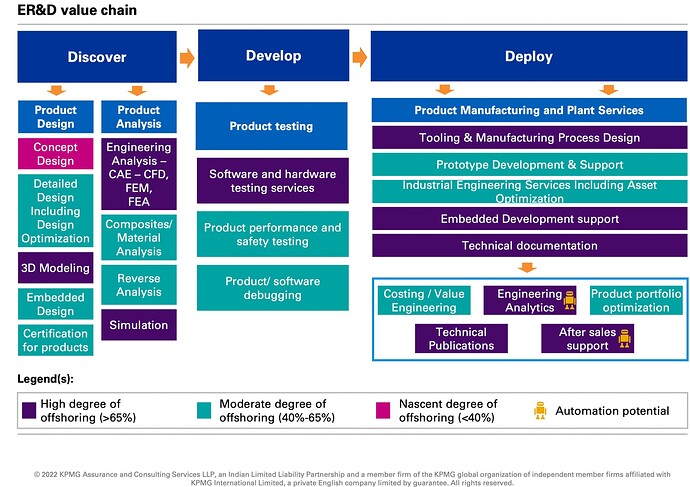I often get asked about the difference between ER&D and IT services, especially from investor friends, who want to dig deeper into LTTS, Elxsi, etc. Here is my attempt to simplify it (Disclaimer: I am not from ER&D). Hope this helps someone.
IT Services vs ER&D
Let’s compare TCS (IT Services) and Tata Elxsi (ER&D) from the house of Tatas. BFSI, the top business vertical of TCS contributed 39% to its revenue in 2022. Elxsi on the other hand got 36% of its revenue from the transportation vertical. TCS caters to the transportation industry too. It has verticals like Transportation, Manufacturing, IoT etc.
So does it mean TCS and Elxsi are doing a different kinds of work within the same industry?
Well, not necessarily. Google “TCS connected vehicles” and you would get a thousand results. One would expect this to be a core capability in Elxsi.
What’s the difference then?
Let’s take the example of “Connected vehicles”. Connected vehicle = Some semiconductor chips and software that make a vehicle smart, and communication (e.g. Phone to Car, Cloud to Car, Car to Car) make it smarter. Plus tons of applications being built on top.
TCS may approach a connected vehicle ecosystem, from say Insurance sector (usage-based insurance, search term = “TCS Digital Insurance Telematics solution”) or a digital platform for OEMs (search term = ” TCS Autoscape”). Outside-In approach of sorts.
Elxsi on the other hand, wouldn’t have started from the adjacent industries. It would start from the vehicle, and its architecture (mechanical, hardware, software) and then go outwards.
TCS may not go deep into the core of the car. Similarly, Elxsi may not build competencies around the insurance industry, and say evolving self-driving regulations across geographies.
There is no “planned” meet-in-the-middle strategy here either, by the two entities. In the hyperconnected world of technologies, boundaries are only getting blurred. Even within one organization, different business units step on each other. What varies is the frame of reference. DNA of TCS is to build software applications, say a bank’s portal & backend platform, digital channels for a hospital etc. For Elxsi it is more than just software which puts in the category called “ER&D”.
So what is ER&D?
There isn’t any textbook definition of ER&D. The two parts “Engineering” and “R&D” do not help narrow down its meaning either.
Engineering has tons of specialized branches and sub-branches. ER&D for the most part go with the traditional meaning of “engineering”. It focuses on tangible products e.g. automotive, aerospace, defense, industrial machinery, and so on.
R&D- We kinda know what it means.
So in layman terms, ER&D is the use of science and mathematics in solving engineering problems. But here is what makes it interesting. Engineers nowadays don’t design their products on pieces of paper (remember blueprints?) and then test them on the field. Well, for the most part. As computers became mainstream, software-based tools evolved. You design a car-part using CAD (computed Aided Design) software and test the design with FEM (Finite Method analysis) software, for various loads, vibrations, temperatures etc. And you do all this sitting in front of your computer, without actually manufacturing it.
And, why stop designing a piece of metal? How about adding a few chips, sensors, and software to it, and call it “connected XYZ”. You know where I am going with this. Extended that to other industries – Healthcare, defense, manufacturing, aerospace, appliances, semi-conductors, and opportunity size become huge.
The kind of skills required are different (or additional) to the regular IT skills like UI/Mobile app, back-end dev with various programming languages. Domain knowledge becomes important. Say someone with Mech engg degree, an understanding of the tools (e.g. CAD/FEM/FEA. Usually taught these days ) can qualify to join ER&D. Add to that AI, ML, IoT, 5G, Cloud, and other evolving fields and it becomes more exciting.
Here’s an interesting value chain of ER&D (Source: KPMG/NASSCOM) with respect to offshoring, where companies like Tata Elxsi, LTTS, Axiscades etc focus on.
Hope this helps a few here. I will expand on the industry structure in the future, but next time someone says ER&D, just think of software used to virtually design/test something which is physical. OR software abstracting hardware/sensors abstracting some mechanical components.
| Subscribe To Our Free Newsletter |


